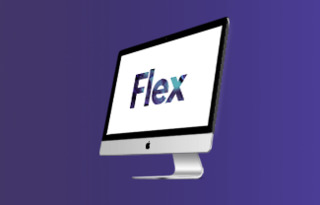
Back in the mid-90s when eBay first appeared on our CRT monitors, the word on everyone’s lips was how the Internet – previously an obscure technology – was now going change all of our lives. And for once, the prediction was quite right: a couple of decades later, the idea of buying and selling without online platforms like Amazon and Alibaba is almost unthinkable.
The latter of those two behemoths was founded in China in 1999, and by 2014 was enjoying an annual growth in revenues of around 50% – a number that sounds astonishing, but which is approximately matched by that which has been achieved by Jeff Bezos’ Amazon in the US. It’s been suggested that by the end of the current decade, global e-commerce will be worth $4 trillion.
Meanwhile, the gig economy, powered by online labour exchanges, has exploded, growing to account for more than a third of employment in the US last year by some estimates. Industry insiders tout that figure to rise to almost half of all jobs by the end of the decade if we include both ‘new wave’ freelancers working through platforms like Uber and TaskRabbit, and more traditional tradespeople.
In 2025, more than 70.4 million Americans are working freelance. The latest projections estimate this number will grow to 86.5 million by 2027, meaning that in the next two years, more than half of the total US workforce will be freelancing. However, the exact number of freelancers is difficult to estimate with the existing sources of government data. The consultancy McKinsey estimated roughly 68 million freelancers in the US.
What is clear is that while the gig-based, freelance economy is on the rise, the nine-to-five is in retreat. The ‘digital nomad’ – a worker unbound from desk and company – is increasingly likely to bump into other versions of him or herself when sitting down to work at the local Starbucks (or at one in whatever far-off land he’s working from).
At the present moment, the trade in freelance job offers is focused around marketplaces like Upwork, Fiverr, and, as already mentioned, TaskRabbit, which was last year bought by Swedish furniture giant Ikea. What all these online marketplaces have in common is that they let both service providers and service buyers look more widely for each other.
And the types of work being traded are diverse – from assembling a flat-pack table to highly skilled trades and professions (the marketplaces DesignCrowd and Project4Hire respectively specialise in marketing and finance services)
But here’s the rub

One common feature of skills marketplaces, just like those for physical goods, is that they comprise a centralized portal that sucks in providers on one side, and buyers on the other, matching the two with the help of search terms and algorithms.
The thing that can be missing in all this is what might be called the Human Factor. Where freelance trade has traditionally been fueled by personal chemistry between buyer and seller, and the sense of trust that gradually builds up in its wake, the purchase of skills via marketplaces can sometimes risk reducing professionals to core competencies, and forgetting the many intangibles that make for great long-term business relationships.
It’s important to emphasise that the overall picture is by no means a gloomy one. Many great partnerships have their basis in skills marketplaces. But we mustn’t be complacent about the challenges that do exist– or shrink from thinking about how new tech can be used to meet them.
How blockchain might help us

People in the know will have seen this coming – but to everyone else, it seems as though blockchain has really burst onto the scene from nowhere in the past couple of years. Of course, the growing attention paid to cryptocurrencies like Bitcoin is part of the reason for this – but blockchain pioneers are also busy developing new applications for this still frequently misunderstood technology.
Venture capital funding is projected to exceed $18 billion, marking a substantial recovery from previous years when funding hovered around $9.9 billion annually. This resurgence is attributed to growing institutional involvement from major players like BlackRock Inc. and Goldman Sachs Group Inc., whose regulatory credibility and established networks are fostering broader market confidence. Generalist VCs are expected to re-enter the market, focusing on startups with clear use cases in decentralized finance, Web3 infrastructure, and consumer-facing applications.
The disruptive potential of blockchain in relation to marketplaces is huge: it could mean, for the first time, transactions taking place not via a central hub, but through decentralized, peer-to-peer interaction. And though this might sound like a big jump, its an idea towards which serious resources are already being directed.
One example is Social Market, otherwise known as Soma – a platform that fosters a digital community that lets users buy from and sell to each other directly. The platform uses ‘cards’, which represent the service or good being sold – a system which its creators say enforces total transparency throughout the transaction process.
The technology being developed by Soma can also, the company says, be used to tackle fraudulent use of established marketplace like Alibaba, eBay, and Amazon – which would be welcome, given that by some estimates, piracy and counterfeiting activities could grow in value to some $2.3 trillion by early next decade.
The same analysis suggests that online criminality could put as many as 5.4 million legitimate jobs under threat.
The Soma platform is powered by a token commonly referred to as the SCT – a virtual coin that can be converted into more traditional funds such as those issued by central banks. Buyers using Soma exchange some of the currency of their choice for SCT, and those from whom they are buying agree to accept the token in exchange for whatever they are selling.
All this enables buyer and seller to connect directly, without the need for a traditional middleman. The result, it is hoped, will be greater cost-effectiveness on one hand, and, on the other, a closer, more human relationship between the two parties.
One of Soma’s founders is Jukka Hilmola, a Finn who graduated from London’s Queen Mary University. He’s noted that while “inevitably, the disruption of C2C markets is currently happening”, there is now the chance of “utilizing blockchain to leverage its disruptive business model”. He adds that he thinks “Soma will be able to differentiate from the other mobile-first startups in the industry."
At the center of all this is the fact that the blockchain itself is inherently secure – thanks to the shared, inviolable record it contains of the whole transaction that it has been used to facilitate. The transparency this brings about greases the wheels of competition, leading to more sales and greater customer satisfaction.
Blockchains here, blockchains there

Of course, Soma is far from the only startup to be taking advantage of blockchain. Based in Melbourne, CanYa is another example of the growing slew of projects designed to offer a decentralised marketplace for services.
CanYa, which is web-based and described as being a “hybrid between an on-chain cryptocurrency payment layer”, underwent beta testing at the end of 2016, before receiving its soft launch last year. It’s powered by an associated token, the CanYa Coin.
A key feature of projects like CanYa is that they hold payment for services under Escrow until those services have been completely delivered – leaving both buyer and seller protected, and free to concentrate on building a mutually beneficial business relationship.
The online marketplaces we have today are continually expanding the range of trading possibilities they offer to sellers – but those possibilities will always, at any given moment, be finite. But in direct trade facilitated by blockchain, the range of service types or ongoing agreements that can be offered have no limits.
It’s worth pointing out that blockchain-powered transactions, while of course carried out digitally, can also relate to services fulfilled in physical space – from home repair, to alternative health therapies, to childcare. The advantage of using a service like CanYa to conduct such business is that every part of what has been agreed is recorded – so neither party can pull a fast one on the other.
CanYa co-found John-Paul Thorbjornsen is bullish about the potential of blockchain technology.
“Everything we know about today is going to be disrupted”, he has said, “as we start to see a prevalence of start-ups raising funds through ICOs and consumers getting in on the ‘ground floor’ of the future tech giants.”
And so it goes

It’s now getting on for a quarter century since eBay and Amazon burst onto the scene and redefined everything we thought we knew about buying and selling. It was about time for the likes of Soma and CanYa to come along and shake things up once more.
The first wave of online marketplaces has flourished thanks to the advantages they offer in efficiency and convenience over traditional brick-and-mortar stores. But with the help of blockchain, a new generation of platforms could offer far greater flexibility and transparency still.










